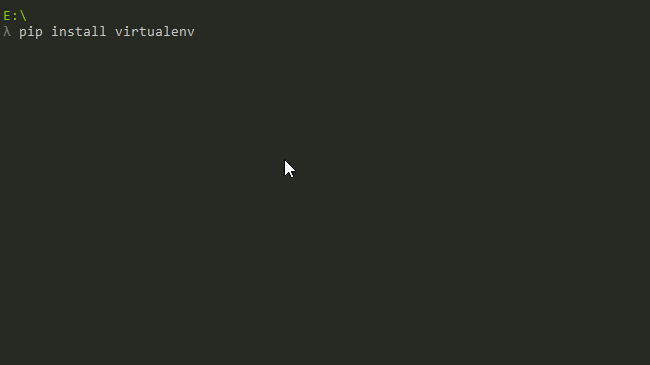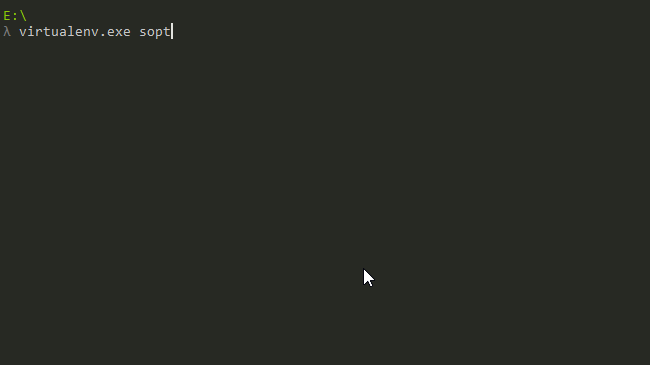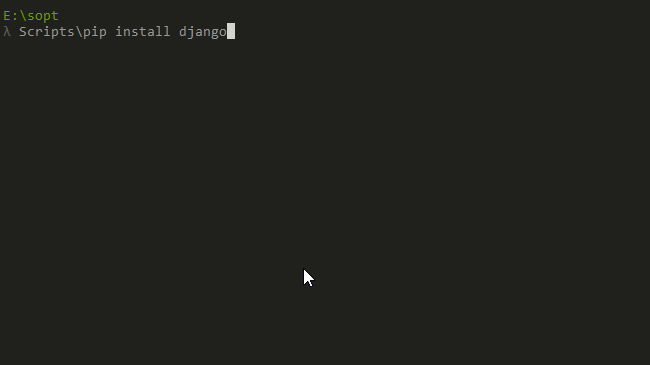Starting the environment with dependencies
In short, to create an isolated environment to work with a project with the dependencies defined, just follow the steps:
Create the new environment:
virtualenv ENV
Access the environment directory:
cd ENV
Copy the project to the environment directory, including the file requirements.txt ;
Enable the environment:
bin/activate
Install project dependencies:
pip install -r requirements.txt
Work with the project, with all dependencies installed in the isolated environment;
When you finish, disable the environment:
deactivate
Below is a more detailed description of how virtualenv works and the main commands for working with a project in an isolated environment.
Installation
Using PIP, VirtualEnv installation can be done with a simple command:
pip install virtualenv
If installed successfully, a similar message will appear:
Successfully installed virtualenv-15.1.0

CreatingtheEnvironment
Tocreateanisolatedenvironmentwithvirtualenv,justrunthecommand:
virtualenvENV
BeingENVthenameoftheenvironmenttobecreated.
OnWindows,thecommandisslightlychangedtovirtualenv.exeENV.
TheresultofthiscommandwillbeadirectorynamedENVinthecurrentpath,containingthefollowingfolders:
bin/
include/
lib/
In Windows, it will be:
Include/
Lib/
Scripts/
The lib and include directories will store the libraries installed in the environment, while the bin directory stores the executables that control the environment. On Windows, the Lib and Include directories are the equivalent of lib and include , respectively, while the Scripts directory is equivalent to bin . The pip and setuptools libraries will already be installed by default in the created environment.

InstallingPackages
Toaddthepackagestothenewenvironment,youmustinstallfrompipoftheenvironmentandnomorethantheoriginalofthecomputer.Thepipexecutableoftheenvironmentisinthebindirectory,sotoinstallapackage,Django,forexample,needstobedone:
bin/pip install django
Or, in Windows:
Scripts/pip install django

Activatingtheenvironment
Toavoidanyconfusionbetweentheglobalenvironment,thecomputeritself,andtheisolatedenvironmentcreated,youcanenabletheenvironmentbyusingthecommand:
source bin/activate
Or, in Windows:
Scripts/activate.bat
This command changes the value of the environment variable $PATH to the bin or Scripts directory in Windows. So, if the environment is enabled, to install a package, just run the default command:
pip install django
If you run everything correctly, a message will appear saying that the Django package is already installed, because we installed it through Scripts/pip .
It is important, when you finish working in the isolated environment that has been activated, that it is disabled so that the value of the environment variable $PATH is restored. To do this, just run the command:
deactivate
Or, in Windows:
deactivate.bat
Project dependencies
With the isolated environment enabled, you can generate the dependency file from the command:
pip freeze > requirements.txt

Theresultofthiscommandwillbetherequirements.txtfilewiththedescriptionoftheprojectdependencies.Inthiscase:
Django==1.11.2
To install the dependencies of a project in the isolated environment, simply execute:
pip install -r requirements.txt









